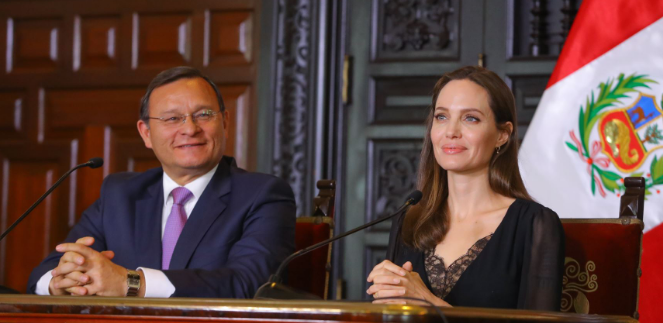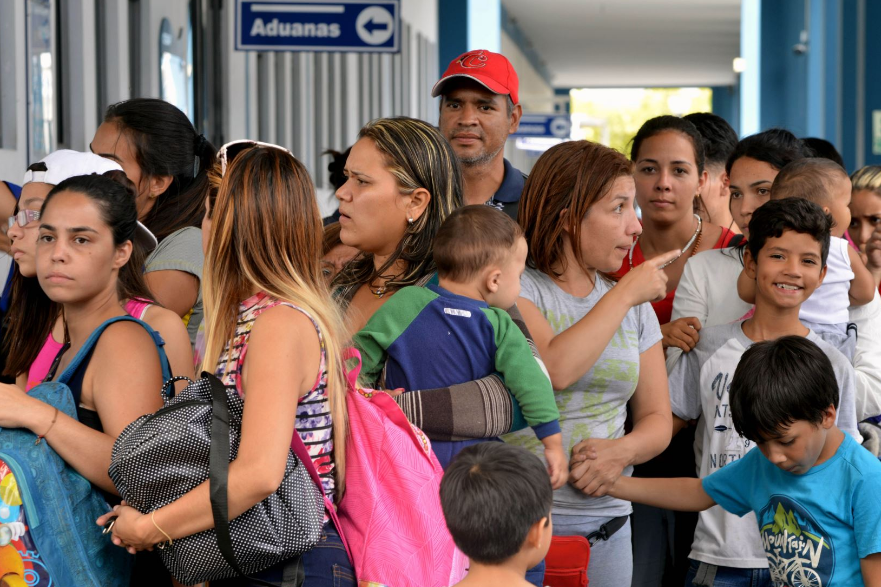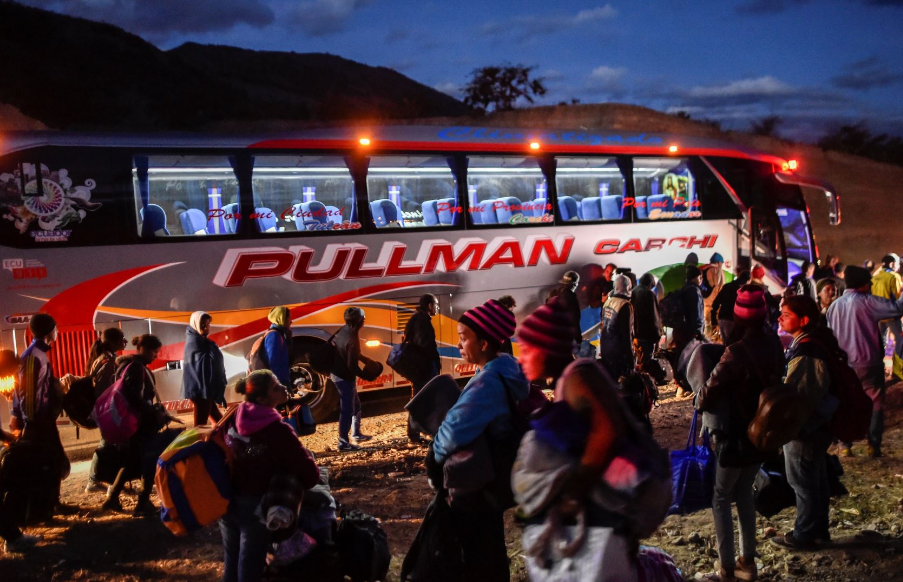
At the end of a three-day visit to Peru, film star Angelina Jolie, as special envoy for the United Nations’ Refugee Agency, met Tuesday with President Martin Vizcarra and Foreign Relations minister Nestor Popolizio to discuss the Venezuelan migration crisis. Jolie’s mission has been to assess the needs of Venezuelan refugees and also the challenges Peru faces as a receiving country.
With U.N. officers, Jolie first visited the district of San Juan de Lurigancho in east Lima where a large number of Venezuelans are living together in hostels, sharing kitchen facilities and large rooms of bunkbeds. The final visit was to Tumbes on the border with Ecuador, where hundreds of people cross the border daily, fleeing from the severe socio-economic chaos under the Maduro regime.
According to the U.N., 2.3 million Venezuelans live abroad — of these, 1.9 million people have emigrated since 2015 as the crisis worsened. Inflation in 2018 has reached 1,350,000%, according to the International Monetary Fund.

In Peru, there are an estimated 456,000 Venezuelans, most on temporary work visas, and thousands await daily at the binational border center in Tumbes to obtain entry permits — in 2016, there were around 6,000 living in the country. Most refugees over the past two years have walked and travelled by bus from their home towns, unable to pay the sky-high air fares on the few airlines that still fly to Caracas.
Many of the refugees are young professionals, selling chocolates on bus routes or at traffic lights, even as barkers attracting customers in Lima’s garment district of Gamarra. In Chile and Argentina, the government now validates Venezuelan university degrees to allow the new immigrants to find better jobs. A year ago, both in Lima and cities in the provinces, refugees could be found on almost every corner selling the famous Venezuelan arepas, cornmeal breads with different fillings. Sales dropped after the novelty wore off — Peruvians prefer their own breads and sandwiches— but there are now several Venezuelan-owned coffee shops and small restaurants not only in Lima’s lower-income districts such as San Juan de Lurigancho but also in upscale Miraflores.

“Each Venezuelan I spoke to described the situation in their country as desperate: the children have no access to antibiotics and are starving to death,” Jolie said in a press conference at the Torre Tagle palace with Foreign Relations minister Popolizio.
“The message I heard was: we didn’t want to leave but we had to,” Jolie said. “I thank Peru for being so generous.”
Generally enterprising and polite, Venezuelans have also met their share of envy and resentment, especially in the low income districts where jobs are harder to find. Radio talk show hosts contributed with fake news, spreading rumors that refugees were being given free healthcare at state hospitals and free schooling for their children. One mayoral candidate in Lima, former mayor Ricardo Belmont, on his radio and TV broadcasts tried to cash in on the rising xenophobia, promising to block Venezuelans from coming into Lima. Maybe it was the reminder that thousands of Peruvians migrated to Venezuela looking for jobs in the 1980s and more than a million left Peru to find opportunities in the United States and Europe, but Belmont’s ratings in the polls plummeted from a comfortable second in the campaign to well below single digits at the time of the election on Oct. 7.





